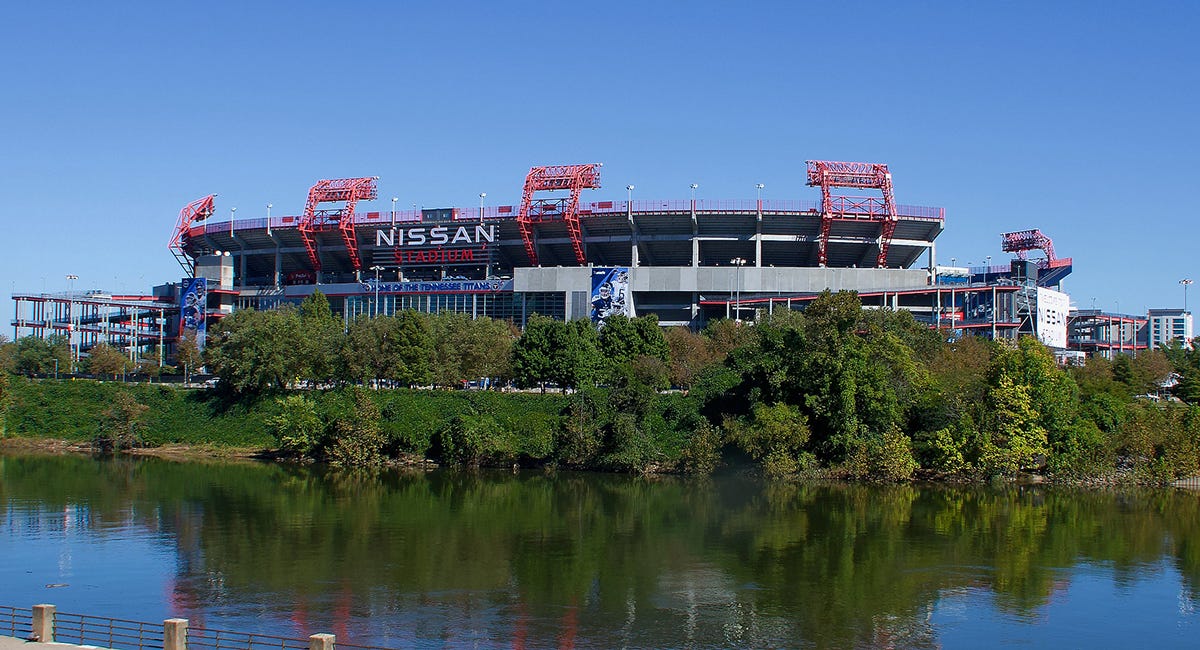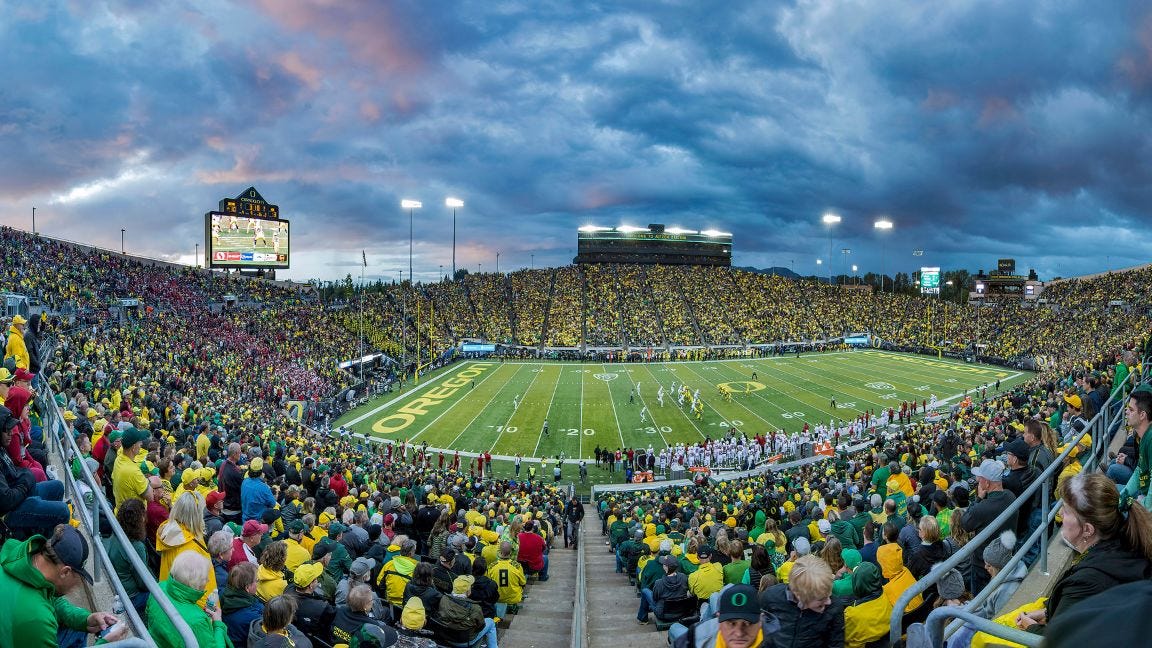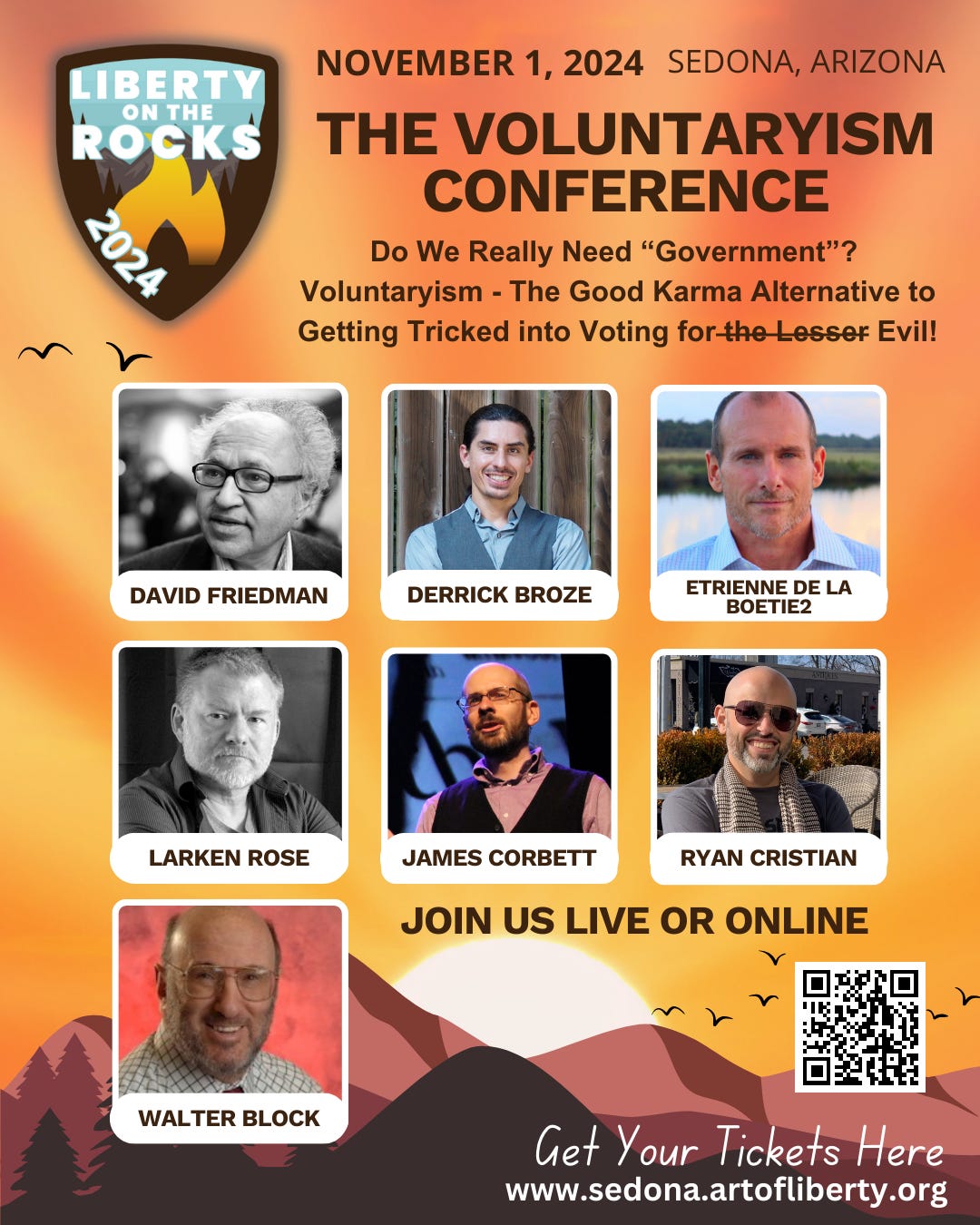The Independent Institute Does A Deep Dive on Sports, Stadiums, and Fan Fundraisers
MLB in Oakland Dies as Billionaire Owner Cashes in on Vegas Taxpayers
Thursday, September 26, 2024, marked the end of a 56-year-long era for fans of the Oakland A’s. The Major League Baseball team played their last game at the Oakland Coliseum.
It’s a bitter and sad time for the team’s fans, who have been subjected to manipulation and abuse by the team’s billionaire owner, John Fisher. Since buying the team in 2005 and especially since becoming its sole owner in 2016, Fisher has practiced what many would characterize as a form of rent-seeking. As sportswriter Jeff Passan said, “The Oakland A’s were killed by greed.“
To hear Oakland officials tell it, this is the tale of a risk-averse billionaire owner who chose the riskiest project possible, one that required nearly $1 billion in public funding for on-and off-site infrastructure, and then walked away when the finish line was in sight. The A’s contend that progress was too slow, that environmental and local groups put up roadblock after roadblock, and that Oakland city officials simply couldn’t guarantee a stadium deal before the team’s January 2024 deadline to continue to receive the franchise’s lifeblood: revenue sharing from Major League Baseball. Losing revenue sharing, Fisher said, “would be hugely detrimental to the organization.”
The deal Fisher chose in Las Vegas, should it be approved, consists of $380 million in public funding for the infrastructure surrounding the ballpark, nine acres of land and access to a growing media market—though far smaller than Oakland’s— that has long been viewed as ripe for an MLB expansion team. The projects in both cities called for Fisher, through a combination of his and his family’s vast wealth, and financing through Goldman Sachs, to privately pay for a ballpark predicted to cost in the neighborhood of $1.2 billion.
For a moment that typifies the disconnect between the Fisher and Oakland, look no further than Kaval’s initial call to Mayor Thao on the evening of April 19. “I can’t really understand how they can say they were blindsided,” Fisher says. “At the end of four years of negotiations, we were nowhere.” This contention mystifies those who worked to put together the financing on a project that was a source of both torment and delight; torment because the project was vast and unwieldy and expensive, delight because it was universally seen as having the potential to transform the city. The public infrastructure money Oakland was asked to raise dwarfed the $380 million in Las Vegas, and city officials say everyone understood it would take time. “To say we were nowhere is BS,” Mayor Thao says. “To say there was no proposal is total BS. Let’s be very clear: we did have a proposal. But maybe it wasn’t a proposal John Fisher could afford.”
Boosters Beware: Stadiums Aren’t Magic
By Art Carden
Another day, another push to give many millions to multimillionaires. The Jacksonville Jaguars are pushing hard for the city to renovate their stadium. Not far away, St. Petersburg, Florida is shoveling money at the Tampa Bay Rays. As economists never tire of pointing out, however, government funding for stadiums throws bad money after good. Instead of going after what C. Montgomery Burns called “the American dream: a billionaire using public funds to build a private playground for the rich and powerful,” cities would put the money to better use filling potholes, improving schools, or just cutting taxes.
The “economic impact studies” on which stadium subsidies are based have another name: lies. In a recent volume honoring the economist Robert A. Baade, who from a relatively obscure academic position at Lake Forest College helped create modern sports economics and especially the well-developed literature on the effects of stadiums and mega-events, a group of distinguished economists have contributed a series of essays in his honor. The Economic Impact of Sports Facilities, Franchises, and Events is expensive, but it should be required reading before anyone talks about paying for a stadium.
Baade is responsible for the tongue-in-cheek “Baade Rule”: Any time you see an “economic impact” estimate, move the decimal point one space to the left.
Stadium subsidies are classic exercises in the broken window fallacy. Anyone who has ever had small children can think of a lot of things they have had to replace because one of the kids broke something. It’s a mistake to infer from the spending you have to do that the economy is “stimulated” as a result. After all, you could have spent that money on something else, while also having the services of the window one of the kids broke.
How To Stop Subsidizing Stadiums: Follow the College Model
The “fundraiser” model for stadium expansion is becoming common among colleges seeking new accommodations for sporting events
By Scott Beyer
To generate economic development, many cities try to lure large private businesses using tax breaks and subsidies. One of the more common examples has been sports stadiums. In the last few years, various teams have insisted on public financing for new stadiums, drawing interest from officials. These measures devote taxpayer money to crony enterprises run by billionaires, in a top-down planning model that harms overall dynamism by crowding out better uses. Cities should not only reject these wasteful measures, but look (ironically) to state universities as a better way to fund stadiums.
In the pro sports world, stadium subsidies have unfortunately become common—more the norm than the exception—leading to whole websites about it (such as Field of Schemes). According to the Brookings Institute, about $7 billion was spent between 1997 and 2006 on stadiums, with the majority of that coming from public sources. In recent years, Atlanta and Charlotte built their teams’ stadiums with public funding, while the governor of Tennessee has endorsed $500 million in bond funding to help the Tennessee Titans build a new one in Nashville, even though their current one is only 23 years old. (Occasionally, these plans are thwarted: Connecticut narrowly avoided a boondoggle in the late 1990s when the New England Patriots wanted to secure public financing for stadium construction in Hartford.)
In the Art of Liberty Foundation’s book: “Government” – The Biggest Scam in History… Exposed! We break down how “Government” is best thought of as a technique for robbing and controlling populations. The book also exposes how an inter-generational organized crime system has been controlling the information the population receives about the legitimacy, necessity and desirability about “government” using mandatory “government” schools, scouting, Explorers, JROTC, ROTC, police and military training, monopoly media, propaganda woven into Hollywood films and television shows, and the algorithmic censorship of the internet.
The indoctrination and propaganda have been so successful that many people have never been exposed to the alternative to top-down “government” control.
They falsely believe that voting in rigged elections for the lesser evil is their only choice.
On November 1st-3rd, The Art of Liberty Foundation will be hosting Liberty on the Rocks – Sedona – The Voluntaryism Conference.
Discover the option that is NEVER offered or discussed by the MainStreamMedia or the MainStream Alternative Media: REAL FREEDOM!
We don’t really need “Government!”
All the legitimate services provided by monopoly “government” would be better provided by the free market, mutual aid societies, armed protective service companies, arbitration providers, insurance companies, and genuine charities.
Without the government’s mandatory inflationary money and confiscatory taxation, the economy would prosper and the population would be much wealthier and better able to help the poor, needy and disadvantaged.
Come join some of the country’s leading economists, legal experts and political philosophers discuss how the world could have more harmony and prosperity without “government”
Sedona.ArtOfLiberty.org - In-Person or Virtual – November 1st-3rd
Go Paid on Substack @ the $50 a Year Level and get a Free Ticket to the Liberty on the Rocks virtual conference and a free softcover copy of Etienne’s new book: Voluntaryism – How the Only “ISM” Fair for Everyone Leads to Harmony, Prosperity and Good Karma for All when released in November.
Go Paid at the $250 a Year Founding Member Level and get a free in-person ticket to Liberty on the Rocks in Sedona and a signed copy of the “Swiss Flip” version of Voluntaryism AND “Government” when released in November.








